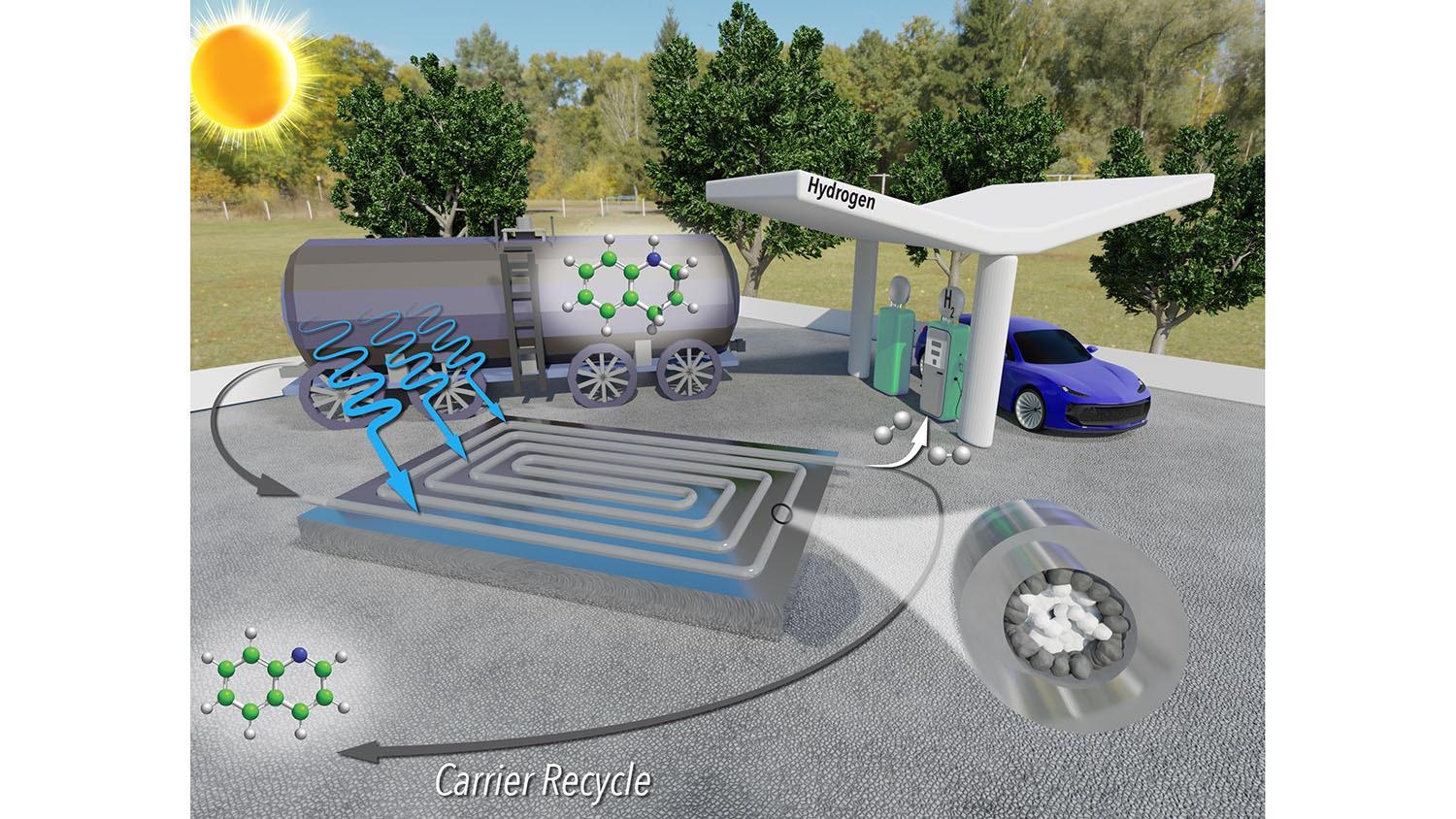At the North Carolina State University, scientists have come up with a new method for removing hydrogen gas from liquid carriers which is fast, affordable, and more energy-efficient compared to earlier methods.

Image Credit: NC State University.
Hydrogen is widely viewed as a sustainable energy source for transportation, but there are some technical obstacles that need to be overcome before it can be viewed as a practical alternative to existing technologies. One of the big obstacles to the adoption of a hydrogen economy is the cost of storage and transportation.
Milad Abolhasani, Study Corresponding Author and Associate Professor, Chemical and Biomolecular Engineering, NC State University
Hydrogen fuel does not result in CO2 emissions. Also, hydrogen refueling stations can be situated at existing gas stations. This takes advantage of existing infrastructure. However, transporting hydrogen gas is hazardous, so hydrogen has to be transported through a liquid carrier.
A primary hindrance to this strategy is that withdrawing hydrogen from the liquid carrier at destination sites, like fueling stations, is costly and energy-intensive.
Previous research has shown that it is possible to use photocatalysts to release hydrogen gas from a liquid carrier using only sunlight. However, existing techniques for doing this were laborious, time consuming and required a significant amount of rhodium—a metal that is very expensive.
Milad Abolhasani, Study Corresponding Author and Associate Professor, Chemical and Biomolecular Engineering, NC State University
“We’ve developed a technique that applies a reusable photocatalyst and sunlight to extract hydrogen gas from its liquid carrier more quickly and using less rhodium – making the entire process significantly less expensive. What’s more, the only byproducts are hydrogen gas and the liquid carrier itself, which can be reused repeatedly. It’s very sustainable.” Stated Malek Ibrahim, first author of the paper and a former postdoctoral researcher at NC State.
A major factor that contributes to the success of the new method is that it is a continuous-flow reactor. The reactor matches a thin, clear tube packed with sand. The “sand” includes micron-scale grains of titanium oxide, in which many are coated with rhodium.
The hydrogen-carrying liquid has been pumped into one end of the tube. The rhodium-coated particles will line the tube’s outer part, where it is possible for the sunlight to reach them. Such particles are photoreactive catalysts that, in the existence of sunlight, tend to react with the liquid carrier to liberate hydrogen molecules as a gas.
The scientists accurately engineered the system so that only the outer grains of titanium oxide are coated with the help of rhodium, guaranteeing the system utilizes no more rhodium than is essential.
In a conventional batch reactor, 99% of the photocatalyst is titanium oxide and 1% is rhodium. In our continuous flow reactor, we only need to use 0.025% rhodium, which makes a big difference in the final cost. A single gram of rhodium costs more than $500.
Milad Abolhasani, Study Corresponding Author and Associate Professor, Chemical and Biomolecular Engineering, NC State University
In their prototype reactor, it was possible for researchers to obtain a 99% yield—implying that 99% of the hydrogen molecules were liberated from the liquid carrier—in just three hours.
Ibrahim stated, “That’s eight times faster than conventional batch reactors, which take 24 hours to reach 99% yield. And the system should be easy to scale up or scale out to allow for catalyst reuse on commercial-scale—you can simply make the tube longer or merge multiple tubes running in parallel.”
The flow system has the potential to run continuously for up to 72 hours prior to its efficiency decreases. At this time, the catalyst could be “regenerated” without eliminating it from the reactor. It is an easy cleaning process that takes around 6 hours. The system can also be restarted and made to run at full efficiency for an additional 72 hours.
NC State has filed a provisional patent for the technology.
Journal Reference:
Ibrahim, M. Y. S., et al. (2022) Continuous Room-Temperature Hydrogen Release from Liquid Organic Carriers in a Photocatalytic Packed-Bed Flow Reactor. ChemSusChem. doi.org/10.1002/cssc.202200733.